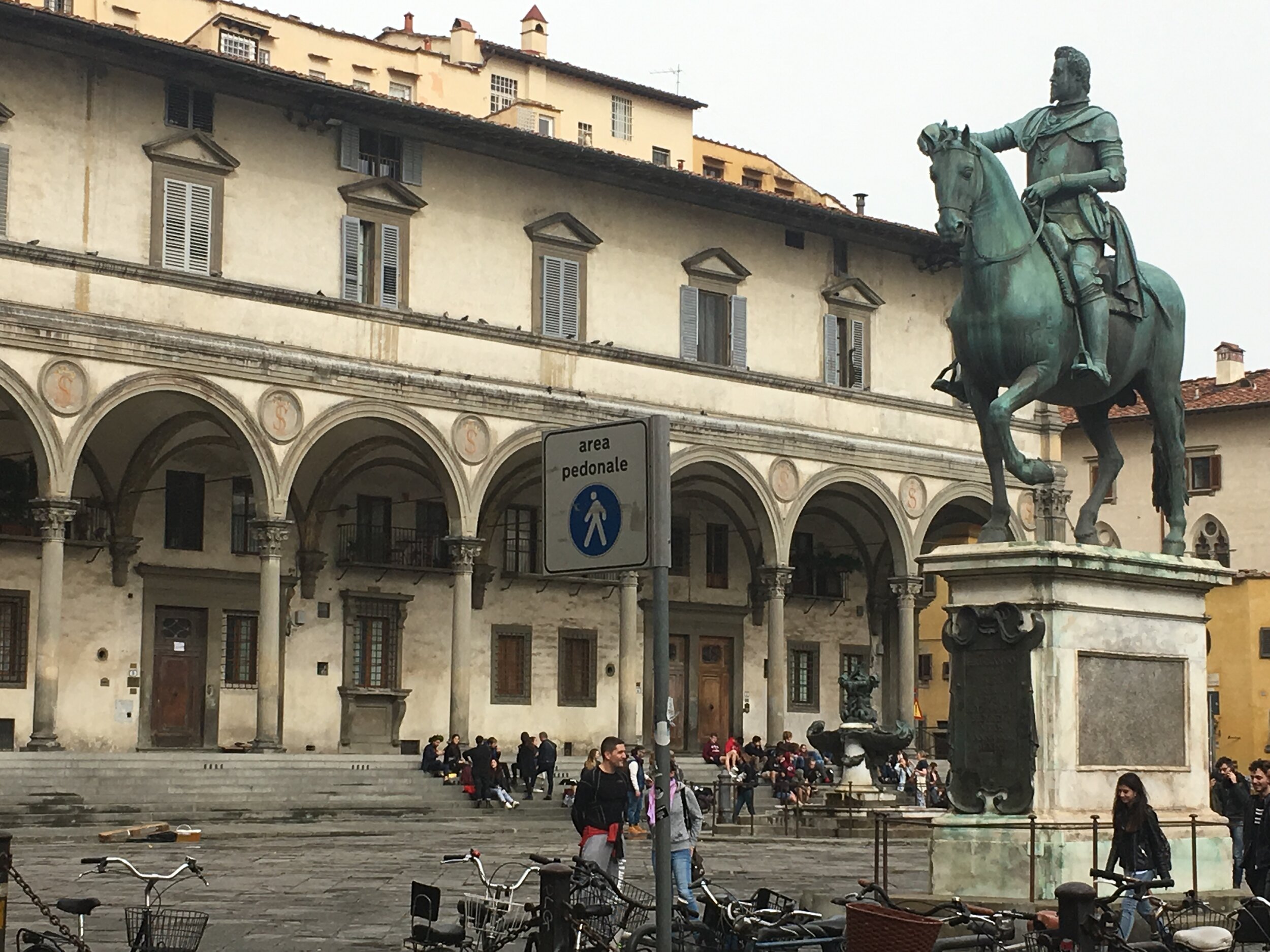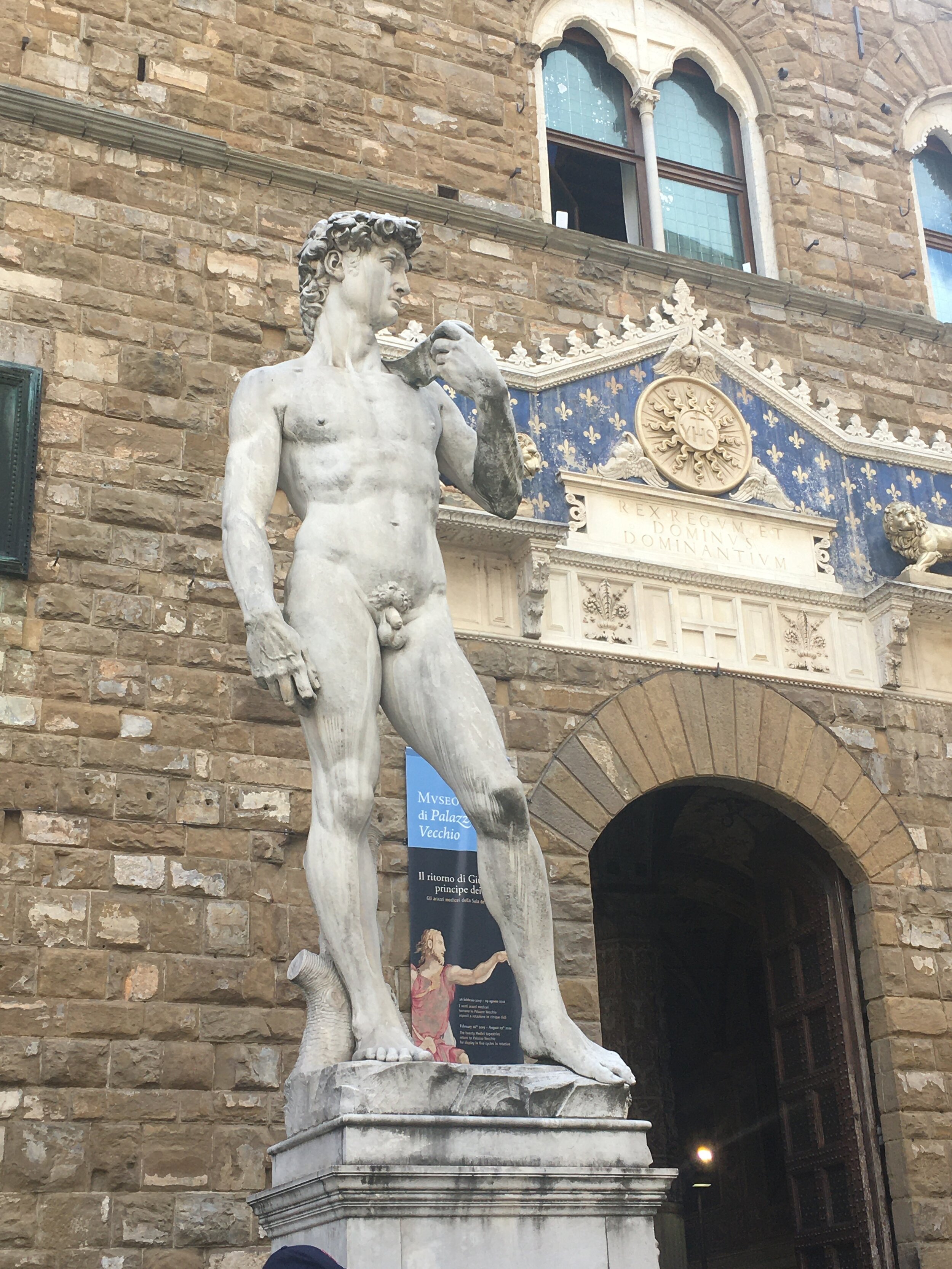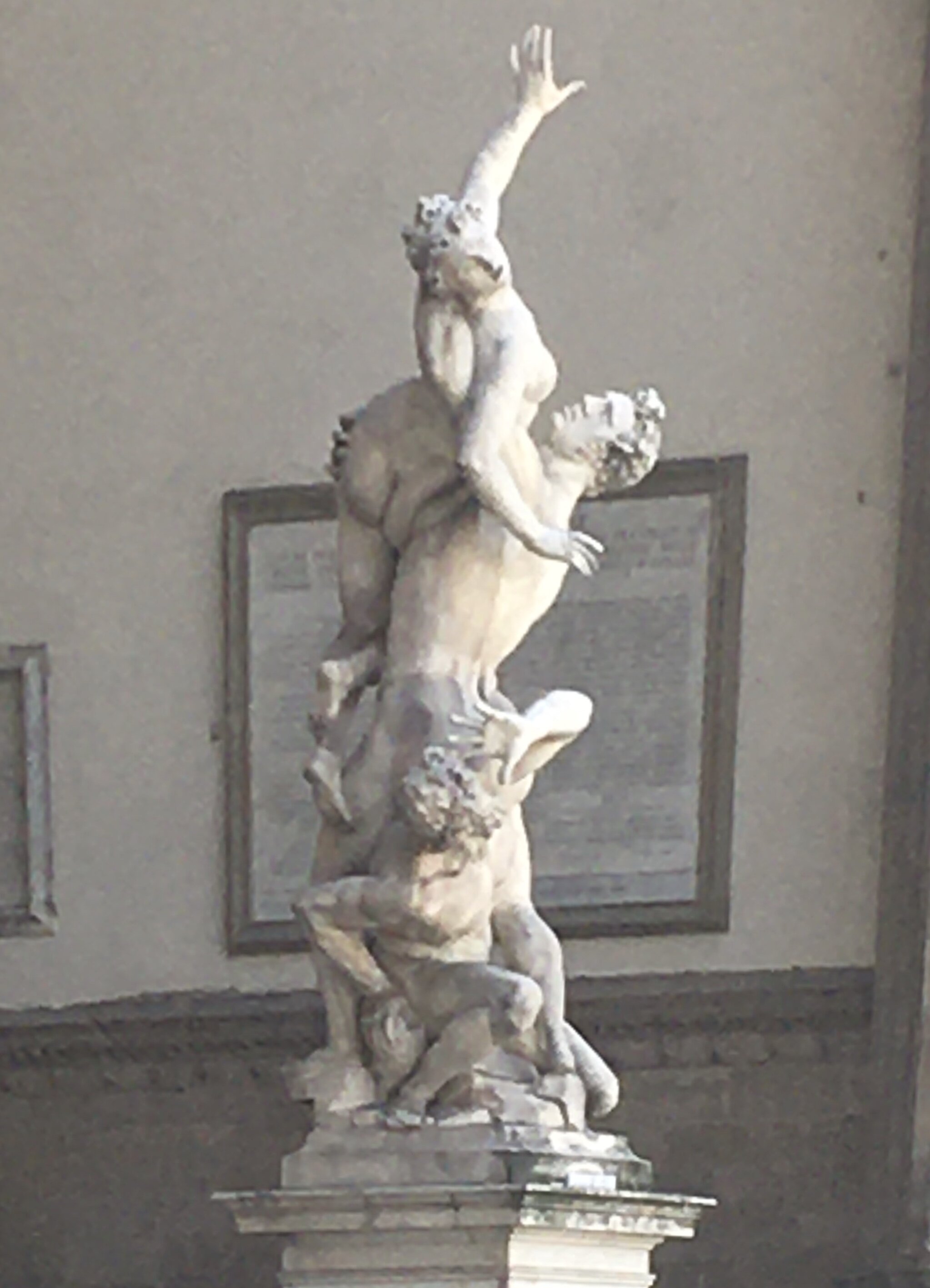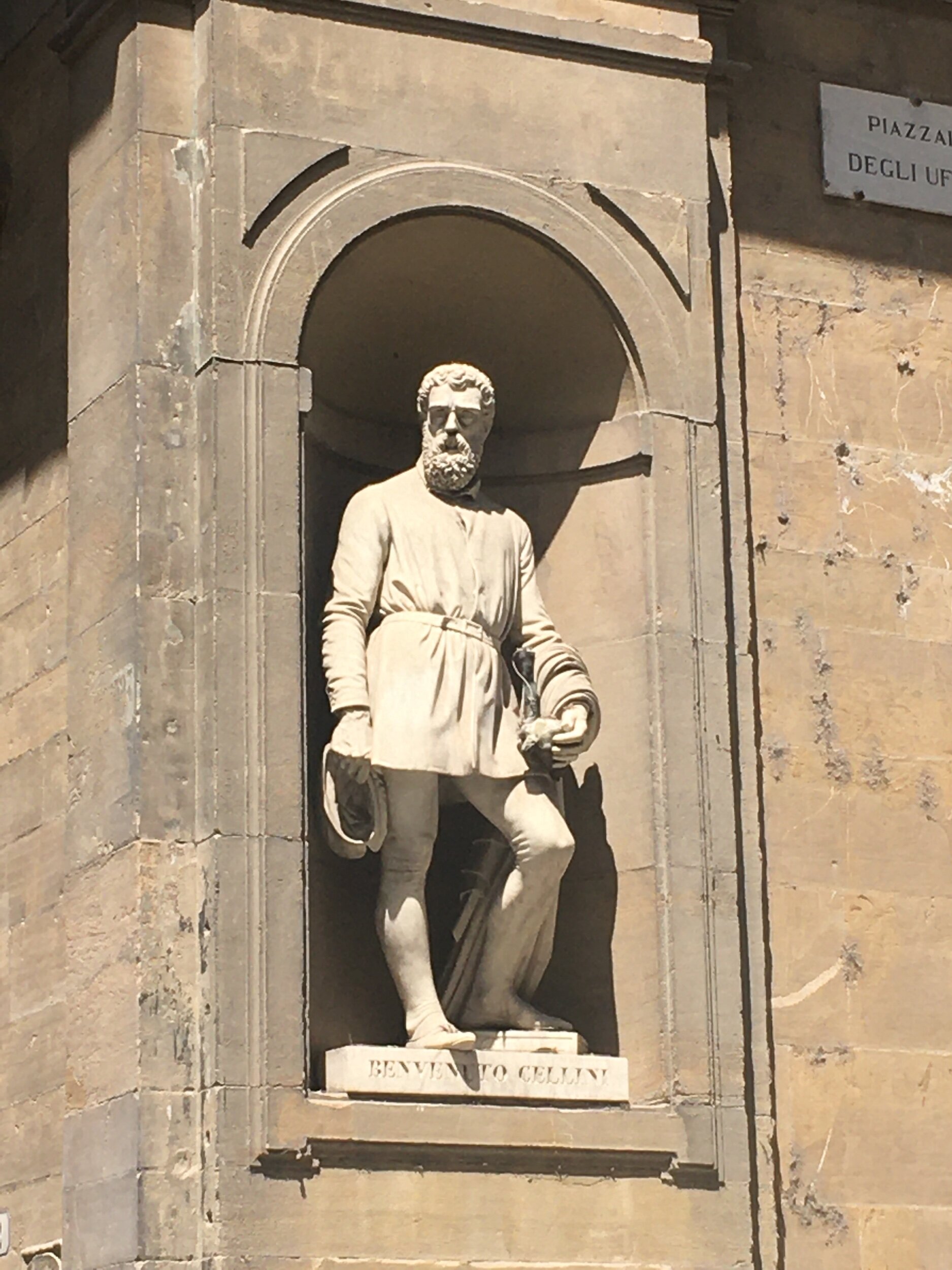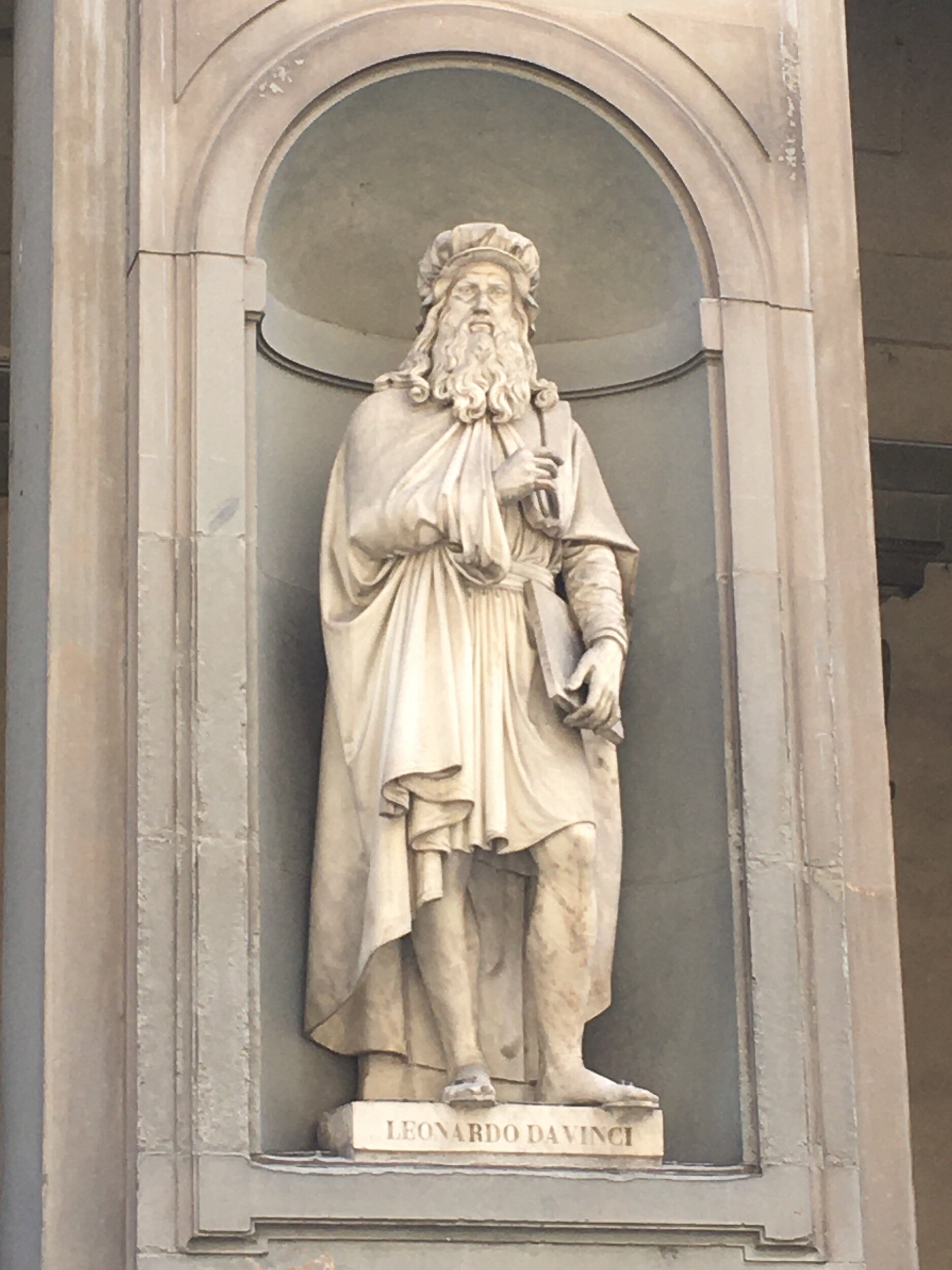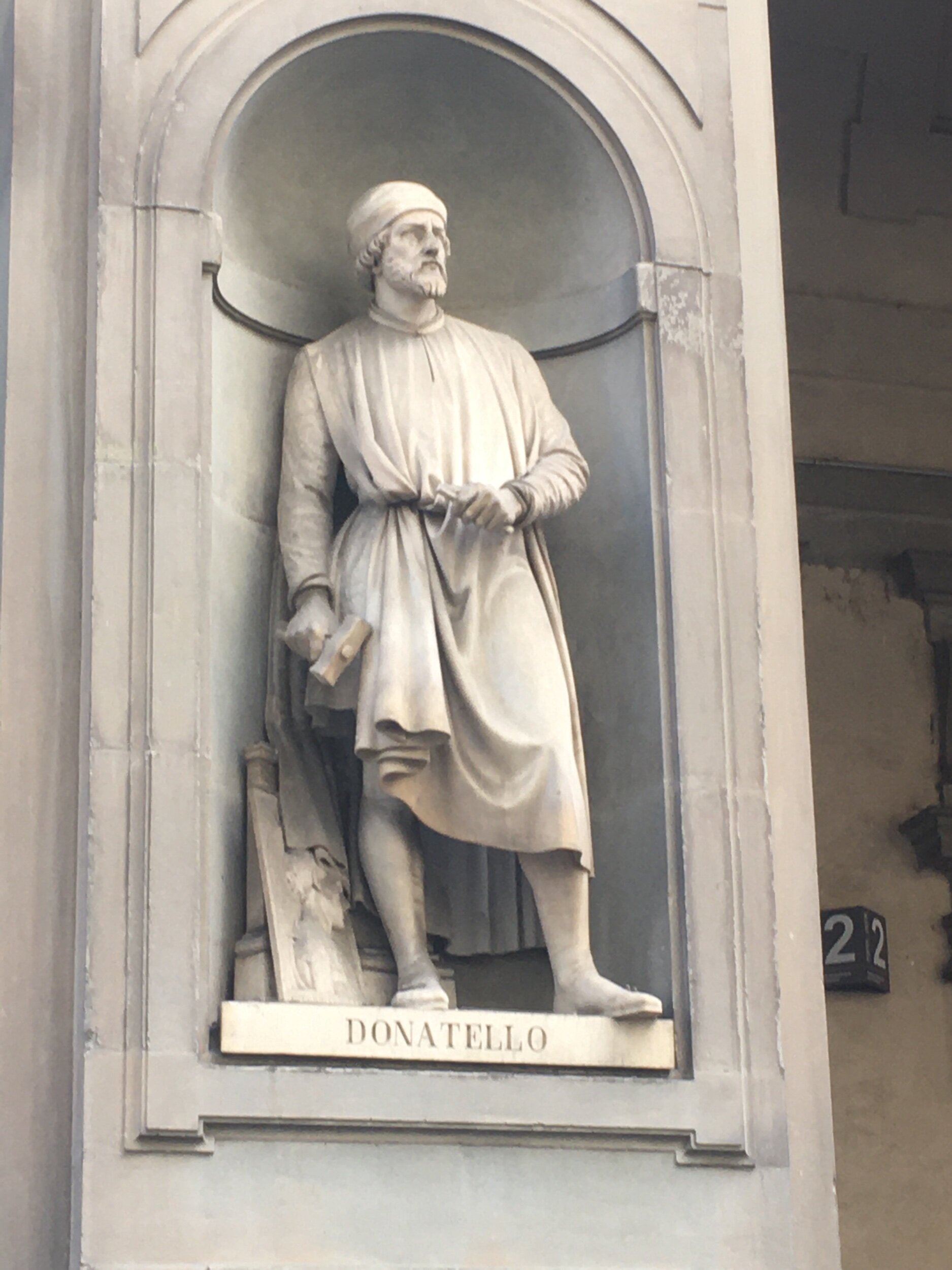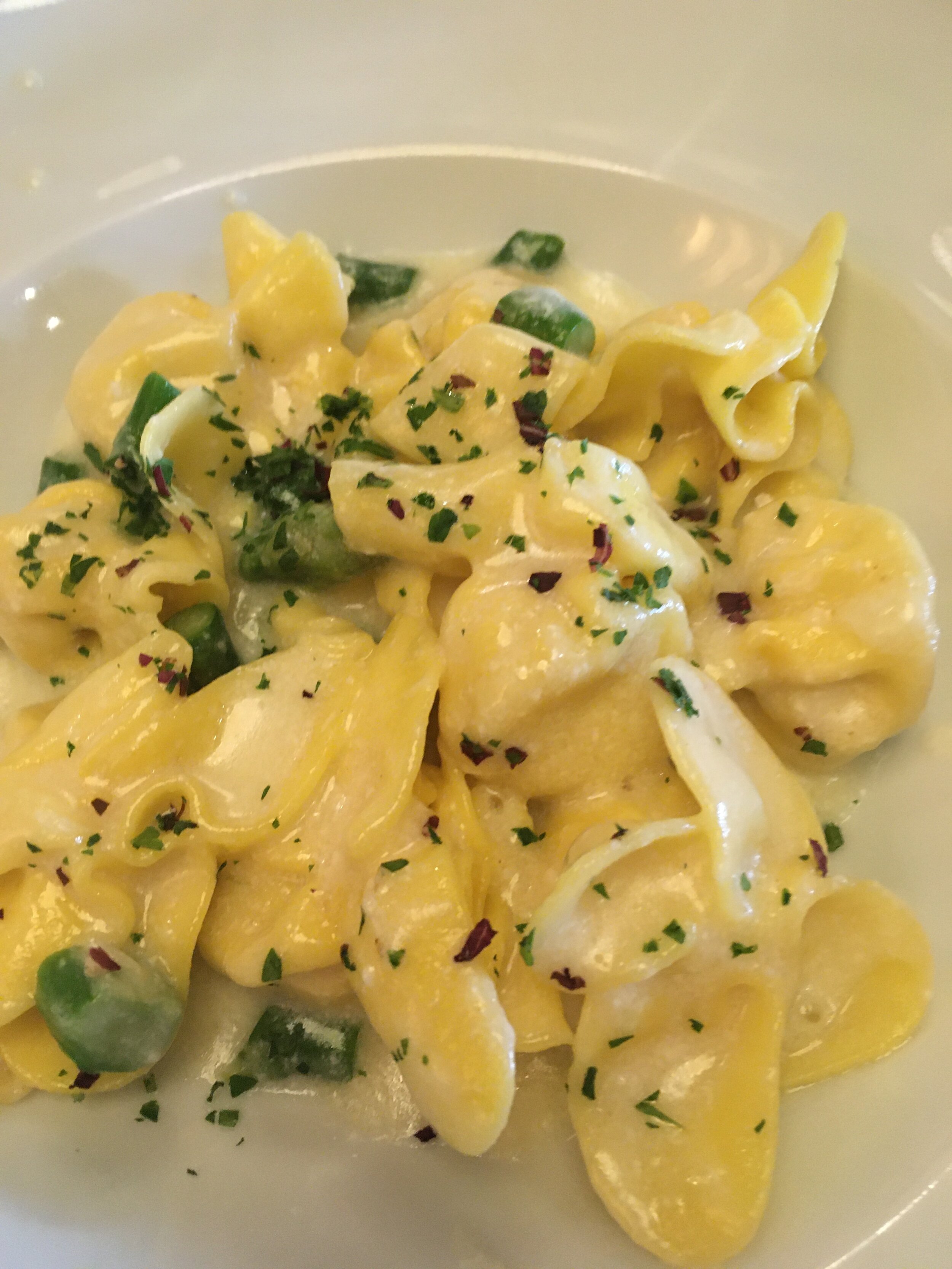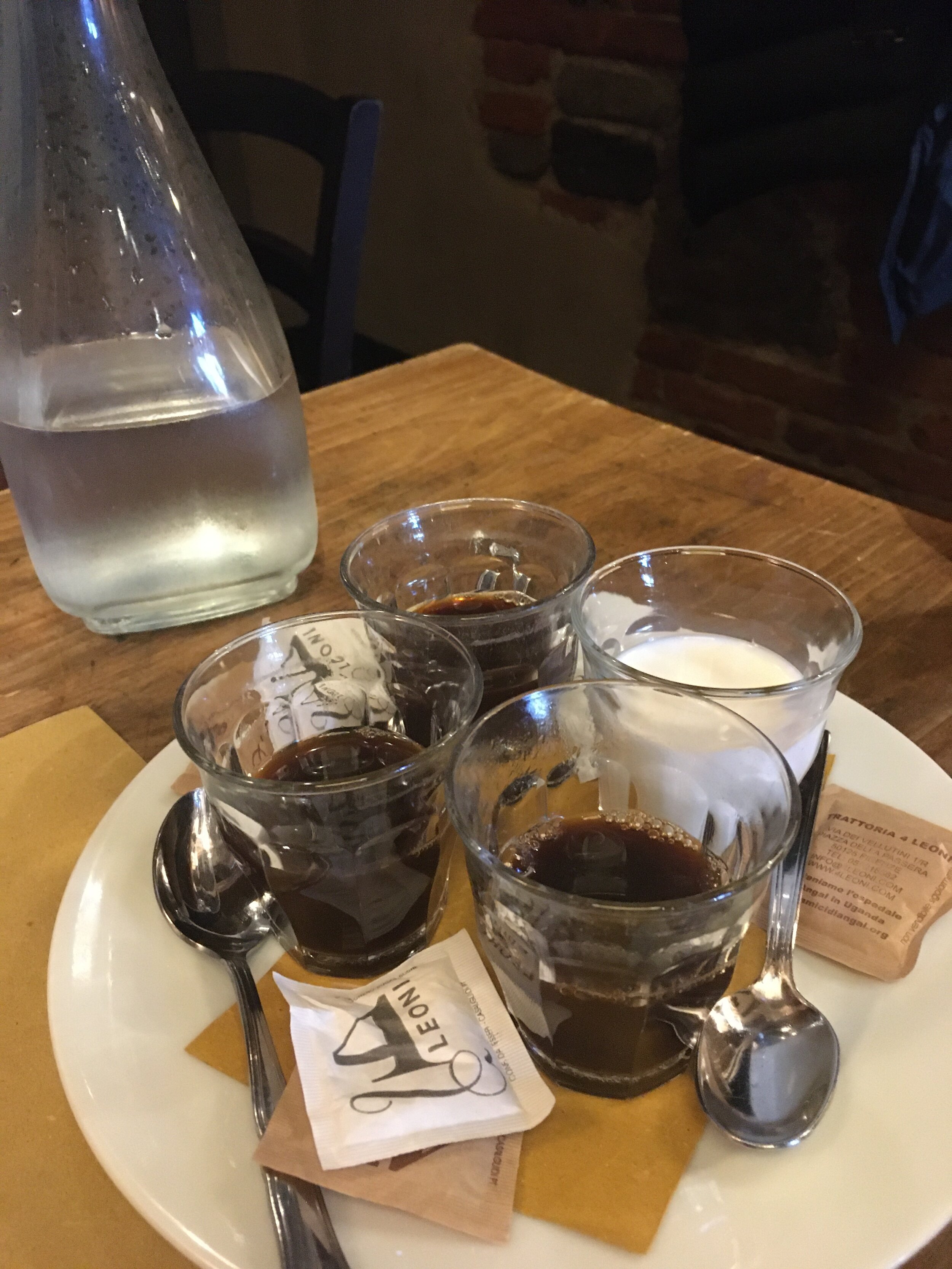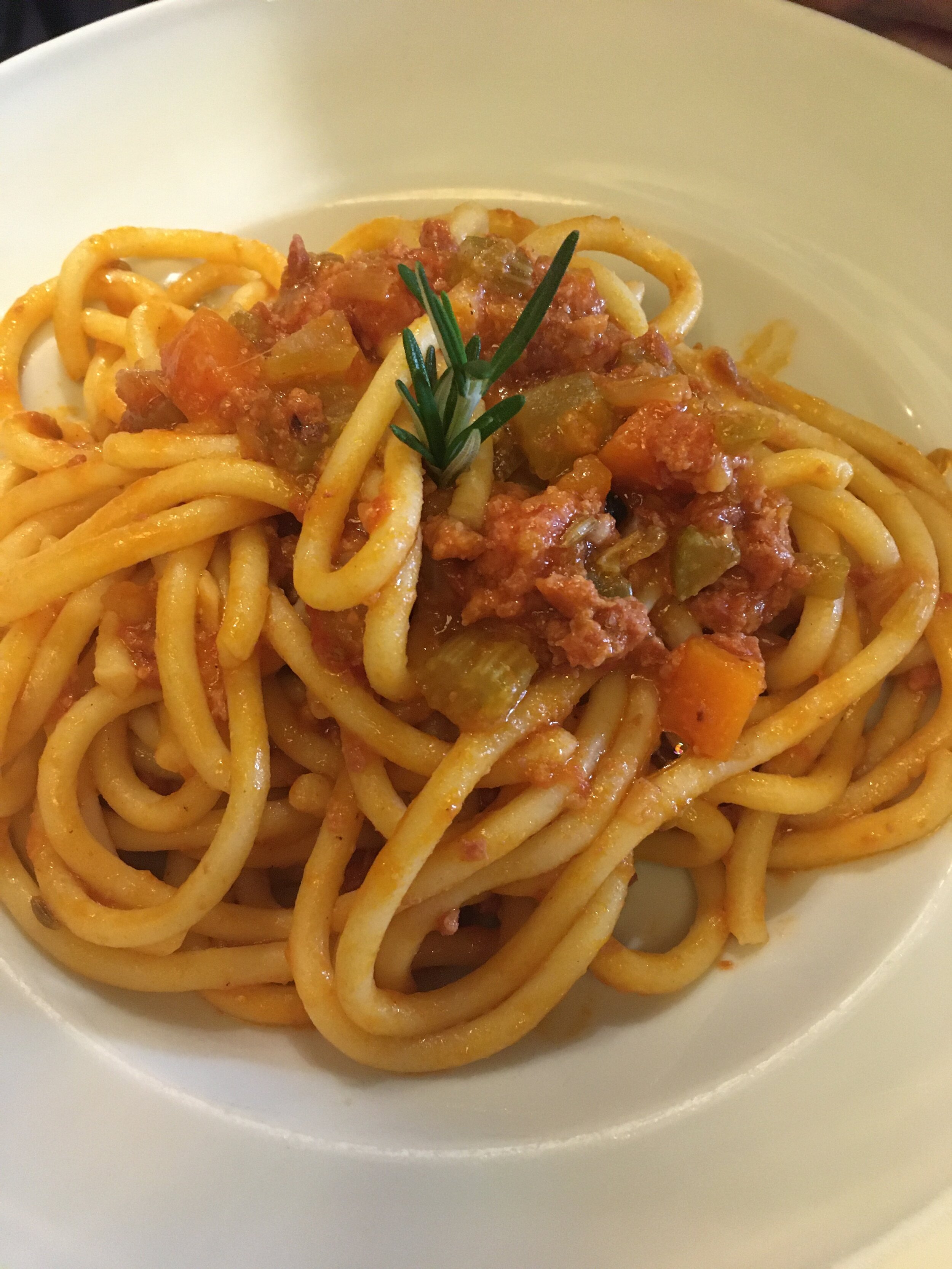Outdoor Sculpture in Florence
The city of Florence is a gift, one I can receive time after time and find just as thrilling as I did on my first visit more than 20 years ago. There is so much to see - cathedrals, small churches, bridges, museums, architecture, hills, and beautiful Tuscan skies. Usually all of these things are enjoyed while simultaneously dealing with (and grumbling about) large groups of tourists. However, this past year has been a bit different (in so many ways) and with fewer people about, there is little competition for close-up views of Florence’s wonderful art and architecture. Even better if, like me, sculpture is one of your favorite art forms. On my last visit I was happy to just wander, never even entering a museum. Instead, I spent my time immersed in the beauty of the many outdoor sculptures and statues in Florence.
It’s impossible to see all of Florence’s sculptural wonders in one visit, but described below is a walk that I love which includes some of my Florentine favorites. And although right now travel is impossible for many of us - I can’t even go to Florence from my home an hour away in Lucca due to our most recent COVID restrictions - I hope this walk is a path we might all enjoy on a future trip to this special city.
The walk begins north of the Duomo in Piazza SS Annunziata (named for the church at the north end). When in Florence I always try to make time for this church. While the rest of my walk across Florence is outdoors, inside this church is one of the loveliest tomb monuments I’ve ever seen. How graceful, and sad, is this woman who keeps eternal watch over the tomb of a loved one? A stop here is a great way to begin a sculpture walk.
A tomb monument inside the church of SS Annunziata, Florence
In the piazza in front of the church are two fountains featuring sculptures of mythical creatures (by the artist Pietro Tacca) as well as a massive bronze statue of Ferdinand I on horseback (by Giambologna). If you look closely, you’ll also see a series of round della Robbia pieces above the arches of the Ospedale degli Innocenti (you can see one above and to the right of the fountain in the photo below).
Next stop - the Duomo, where the sculptures include both large statues and countless small, detailed sculptures adorning the facade and doorways.
On my last visit I did not approach them with an eye toward the historical significance of each piece - who is that saint? that pope? that angel? (for that it is better to visit the Duomo museum) but rather just with an appreciation for the craftsmanship and beauty of the work.
The intricacy of the carvings, the stunning colors, the gracefulness of the faces, they way they are placed on the colorful facade - what a display of artistry.
A much smaller, but equally beautiful sculpture. Many of these small marble figures surround the doorways and windows of the cathedral.
After spending time at the Duomo, the walk continues to the Piazza della Signoria and the Loggia dei Lanzi, full of famous statues including a scaled-down reproduction of Michelangelo’s David and the fascinating but brutal Rape of the Sabines by Giambologna.
Walking further towards the river Arno, at the far end of the piazza, is the Fountain of Neptune. Statues are wonderful, but a statue that is also part of a large fountain is fantastic (especially is you happen to visit on a warm day).
The Fountain of Neptune, Florence
Wandering past the Palazzo Vecchio and along the Uffizi courtyard are a series of statues of famous artists, scientists, and literary giants. From left to right below: Cellini, DaVinci, and Donatello.
Walking across the Ponte Vecchio, there is a bust of Cellini. He was a master goldsmith, as well as an artist and writer. He may have been a bit of a troublemaker, but he’s a home town boy and it is fitting to honor him on the bridge where today so much of the Florentine gold is sold.
The inscription reads: Benvenuto Cellini Maestro Gli Orafi di Firenze
Across the Ponte Vecchio, the walk comes to an end. For me, the perfect ending to a wander through Florence’s outdoor sculptures is a lunch “oltrarno” at the restaurant 4 Leone. After all, fabulous food is another Italian art form!



